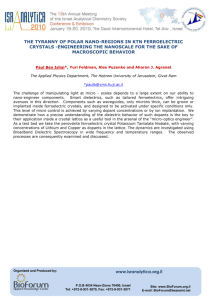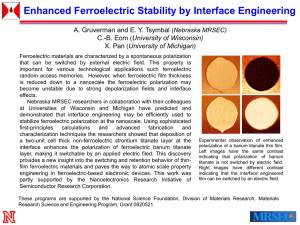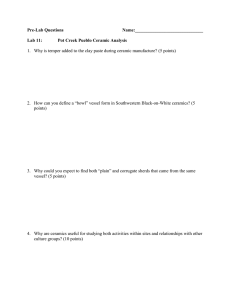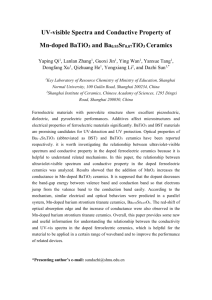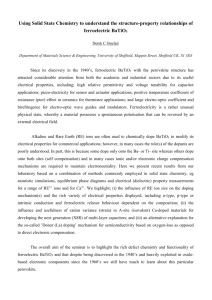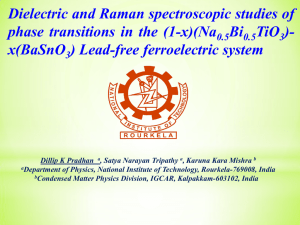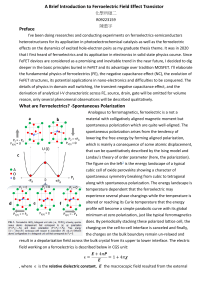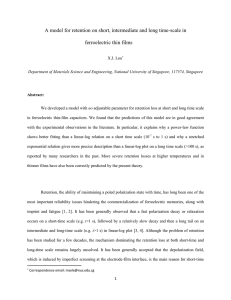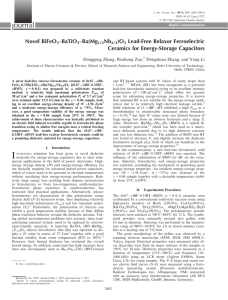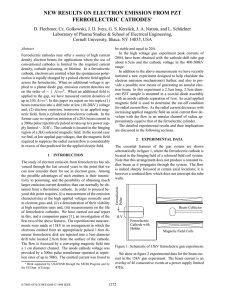FERROELECTRIC CERAMICS: TAILORING PROPERTIES FOR
advertisement
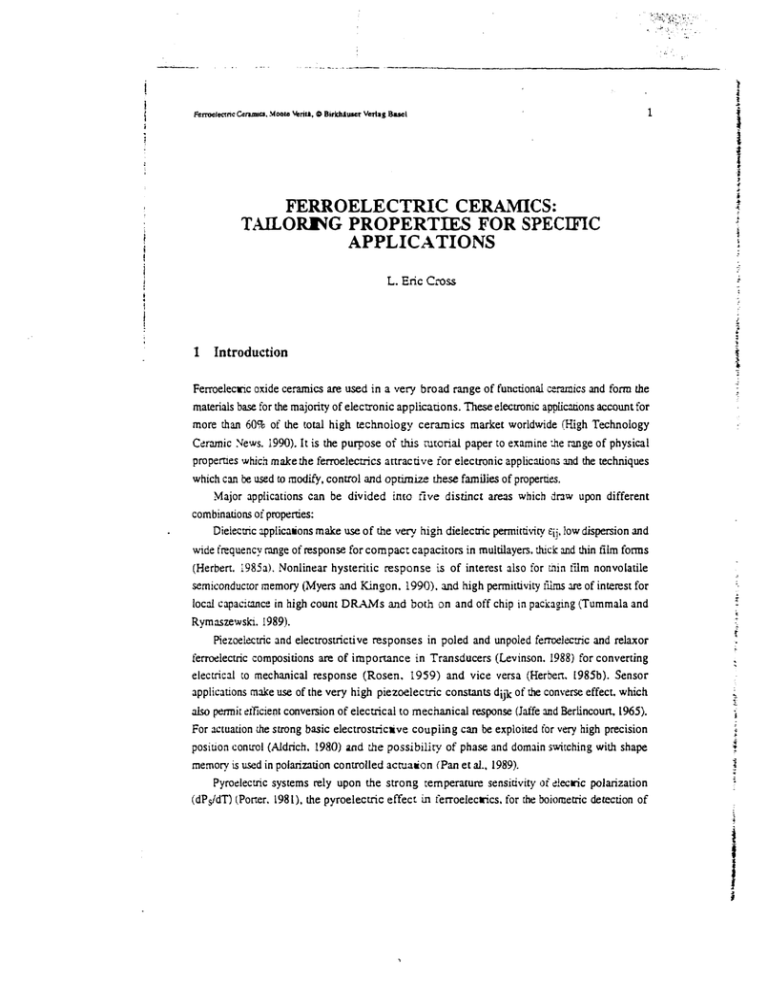
.---- -. _-- . _------ ------ 1 FERROELECTRIC CERAMICS: TAILORING PROPERTIES FOR SPECIFIC APPLICATIONS L. Eric Cross 1 Introduction Ferroelectric oxide ceramics are used in a very broad range of functional ceramics and form the materials base for the majority of electronic applications. These electronic applications account for more than 60% of the total high technology ceramics market worldwide (High Technology C ramic :-.fews. 1990). It is the purpose of this tutOrial paper to examine :he range of physical properties which make the ferroelectrics attractive for electronic app lic atio ns and the techniques which can be used to modify, control and optimize these families of properties. Major ap pli cations can be divided into rIve dis tinc t areas which draw upon different combinations of properties: Dieiectric lPplications m ake use of the very high dielectric permittivity eij, iow dispersion and wide frequency range of response for compact capacitors in multilayers. thick and thin film forms (Herbert. 1985a). Nonlinear hys te ritic response is of interest also for thin mm nonvo latile semiconductor memory (Myers and Kingan. 1990), and high permittivity tUms are of interest for local capacitance in high count DRAMs and both on and off chip in packaging (Tummala and Rymaszewski. 1989). Piezoelectric and el ectrostricti ve respons es in pol ed and unpoled ferroelectric and relaxor ferroelectric c o mposi ti ons are of importance in Transducers (Levinson. 1988) for converting electrical to mechanical response (Rosen. 1959) and vice versa (Herbert. I98Sh). Sensoi' applications make use of the very high piezoelec tric constants dijk of the converse effect. which also permit efficient conversion of electrical to mechanical response (Jaffe and Ber lincourt. 1965). For act uati on the s trong basic electrostrictive coupling can be exp l o ite d for very high p recision position c ontrol (Aldrich. 1980) and the possibility of phase and domain switching with shape memory is used i n polarization co ntrolled actuation (Pan et al., 1989). Pyroelectric systems rely upon the strong temperature se nsitivit y of lectric polarization (dPsldT) (Poner. 198 1). the pyroelectric effect in ferroelectrics. for the hoiometric de tection of I f I 2 L.E. Cross long wavelength infra red (lR) radiation (Whaanore et al .• 1980). S impJe point detectors are widely used in domestic and industri al applic atio ns (Liu. 1976) and there is now a strong focus upon imaging systems which may be used for nigh vision (WattOn, 1986) and for thermal-medical dia gnostics (Kazan, 1977). P.T.C. semiconductors are a specialized area of application in which the barrie r to charge transport at the ceramic grain boundary in specially processed barium titanate based ceramics is controlled by the polarization state of the ferroelectric (Daniels and Haerdtl. 1976). giving rise to an extremely strong positive temperature coefficient o f resistivity (PTCR effect) controlled by the Curie point of the ferroelectric composition (Hanke. 1979). In Elcctro-Optic applications the properties of interest are the high quadratic (DiDomenico and Wemple. 1969) and linear (Giinter. 1980) el e ctro-optic coefficients (rijk. gijkl) which occur in ferroelectrics and the manner in which these can be controlled in modulators (Salvo, 1971), switches (Alfness, 1986), guided wave strUctures and photo-refractive devices (VanderLinde and Glass. 1975). In this tutorial. the dielectric. piezoelectric and electrostrictive applications will be the focus, but the techniques examined to modify and improve properties will also be valid for many of the other material needs. Considering the nature of the properties to be optimize d . two important features will be stressed. rtrStly the interest is in bulk. lattice properties controlled largely by the crystal structure of the ceramic. Secondly in every case it is augmented compliance (softness) which is of interest, in contrast orten to the structural ceramics where it is stiffness which must be augmented. It follows then that instability of the lattice will be of importance. since this engenders compliance, and thus phase changes which are the finge r printS of instability will be of major importance. Frequently to improve properties then. we are looking to exploit and control solid state phase transitions. Clearly a boundi ng condition is that the crystal structure must permit ferroeiectricity in a useful region of temperature and pressure. and must be of a type which can be exploited in the simple polycrystal ceramic form. In fact. all of the strUctures of interest are based on regular arrays of oxygen oct.:lhedra. and the simple perovslcite strucrure is certainly the most widely used. 2 Structure Types of Interest The interesting oxygen octahedron structures which show strong ferroelectric properties with high usable temperature ran ges are all based upon corner linking of ox.ygen oct.:lhedra. The simpl est arran gement is the very well known perovslcite structure Figure 2.1 where the octahedra are linked in a regular cubic array forming the high symmetry m3m prototype for many ferroelectric forms.
